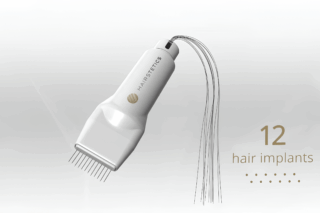At WHX Miami, leading experts called for a transformative shift in women’s healthcare—emphasizing equitable funding, ethical AI innovation, and inclusive design—to address longstanding gaps and unlock vast clinical and economic potential.
At WHX Miami’s recent session titled “Empowering Women’s Health: Pioneering Technology and Innovative Business Models,” five trailblazing leaders shared a clear message: women’s health is long overdue for systemic redefinition—clinically, economically, and ethically. The panel included Janet Beery (Worlds View Solutions), Dr. Irman Forghani (Mount Sinai Medical Center), Rachelle Ferrara (Modivcare), Demi Radeva (Akros Advisory), and Gabriela Sabate (Quralo, Cloodie).
With backgrounds spanning genomics, venture strategy, and health technology, the panelists converged around one foundational truth: healthcare systems and success metrics designed for a generalized male patient base are unfit for the nuanced, relational needs of women’s health.
Rather than slotting female health innovation into conventional SaaS or transactional care models, the panelists called for approaches that prioritize longitudinal outcomes and contextual data.
“Women’s health is relational and longitudinal—it is not transactional,” said Ferrara. “Business models need to reflect that reality, not force it into something it’s not.”
Radeva emphasized the scaling dilemma for female founders:
“It’s not just about product-market fit. You need to constantly reassess your business model and pivot quickly when necessary. Resilience, storytelling, and access to accelerators like Techstars are key.”
Rebalancing the Scales: Funding Women’s Health for Global Impact
Despite women comprising over half of the global population, less than 5% of R&D funding goes toward women’s health—only 1% of that focuses on non-cancer conditions. This neglect isn’t just a moral failing; it’s an economic one. Addressing diagnostic lag in conditions like endometriosis, which often takes over eight years to confirm, presents vast opportunities for cost savings and improved quality of life.
“Endometriosis is emblematic of how under-researched conditions are devastating lives,” noted Sabate. “Women suffer through misdiagnoses for years, and we act surprised when they lose trust in the system.”
Beyond diagnostics, the implications of improved women’s health access are global and financial. The panel agreed that solving persistent issues in this field could add $1 trillion to the global economy.
“We’re not just solving for fertility or menopause,” said Beery. “Women support entire social systems. Their health directly affects the productivity and well-being of families and communities.”
For investors, the takeaway was clear: ignoring women’s health is not just shortsighted—it’s fiscally irresponsible.
Despite women comprising over half of the global population, less than 5% of R&D funding goes toward women’s health—only 1% of that focuses on non-cancer conditions.

AI and Wearables: A New Era, With Caution
The panel’s second major focus was the transformative power of AI and wearables in early detection and disease management. Dr. Forghani shared Mount Sinai’s latest initiative using AI for predictive cancer screening, where mammograms analyzed by AI were able to detect abnormalities six years earlier than conventional techniques.
“When you combine imaging with genomic data,” she said, “you don’t just detect cancer—you personalize its prevention.”
Sabate highlighted the breakthrough potential in synthetic data.
“We used to feel ashamed about simulating patient records. Today, we call it synthetic data, and it’s driving faster, more cost-effective drug development,” she said, citing AlphaFold’s role in compressing drug trials from years into months.
AI-powered menstrual pads, capable of detecting biomarkers for ovarian cancer or endometriosis, and microbiome-focused diagnostics were also mentioned as frontier tools poised to change the standard of care.
Yet, with innovation comes the need for ethical boundaries.
“There is an inherent 25% error rate in large language models when applied to healthcare,” warned Dr. Forghani. “We are nowhere near ready for AI to make clinical decisions without oversight.”
Ferrara emphasized the rise of “human-in-the-loop” systems to reduce algorithmic hallucinations and prevent misdiagnoses, citing an example where a patient was mistakenly diagnosed with dementia due to a note about a pet’s condition.
“Security and privacy must be designed internally,” Beery added. “You can’t outsource trust.”
Bridging the Divide: Inclusion Beyond Devices
Technology alone cannot close the gap without equity in design, literacy, and access. Sabate raised concerns about who benefits from current wearable tech:
“Are we getting data from diverse women, or just from those who can afford the latest watch?”
The panel stressed that inclusion goes beyond distribution—tools must be built with frontline workers and underserved communities in mind.
“Digital literacy is as important as physical access,” added Ferrara. “It’s not enough to design for tech-savvy users. What happens when there’s no broadband or when women don’t own smartphones?”
The call was clear: equitable health innovation must account for cultural, geographic, and socioeconomic realities.
The WHX Miami panel challenged the medical and tech communities to reject the status quo and rise to the challenge of redesigning women’s healthcare from the inside out. Innovation, they argued, is not simply about creating new tools but about restructuring the systems that fail half the world’s population.
“Let’s stop asking how much more funding women’s health needs,” Sabate concluded. “Let’s start asking how much we all lose by ignoring it.”











